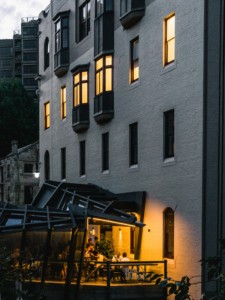Multi-Family Investments are Proving Strong for the Long Term, Even Maintaining Income Through a Recession
The demographic and lifestyle shifts currently underway across America are startling. Almost all indicators point to why multi-family investing provides some of the best risk-adjusted returns available.
It is counter-intuitive that more people are renting even though the US economy is in its longest up-cycle and still doing well in most sectors. That usually favors more people buying than renting.
There was a swing from homeowners to renters 10 years ago when the economy went into deep recession, for the obvious reasons of job loss, home foreclosures, and people needing cheaper housing alternatives. Home ownership peaked in 2004 at 69%, bottomed in 2015, and has remained near bottom since then (currently about 65%). It is gradually increasing again, though, since Millennials are getting older and “settling down” more with homes and families. Nonetheless, overall population gains and demographic / lifestyle shifts are more than counterbalancing that.
So, why are more people renting, and why is there so much current and projected future demand for multi-family properties?
1. There have been strong demographic changes over the past decade. 8.9 million net new households appeared, and typical younger renter-age individuals continue to expand in number.
2. Extensive lifestyle changes have taken root. More young adults want to live close to work and in active neighborhoods (which favors high density apartments). “Settling down” with families is becoming progressively delayed, with fewer people marrying and the others marrying later in life, having children later, and delaying moves to traditional family homes. Older folks are also seeking the benefits of downsizing, location mobility, and lower home maintenance responsibilities, all of which align with apartment living. One of the most interesting changes is that an increasing number of affluent people are switching to be renters, since they want lifestyle convenience, flexibility, and the ability to deploy their assets somewhere else than their home.
3. Debt is a big problem for many Americans, even without owning a home. Student debt has reached record levels, and consumer debt on cars, goods, etc. remains a big ongoing issue. Paying off these debts restricts people from saving for down payments to buy a home, plus this accumulated debt counts against their Debt To Income (DTI) ratios for getting home loans. People can much more readily afford one month’s rent security deposit and ongoing rent much more than they can afford a 20% house purchase down payment and monthly mortgage payments.
4. Overall affordability is key. Home purchase prices have recently been appreciating 6.7% annually while rents had gentler annual increases of 3.5%. Home prices are increasing faster than wages in 80% of US markets.
5. There is availability and choice, with caveats. Construction has increased significantly on multi-family properties to try to meet the demand. This does create potential over-supply concerns in certain markets. Nonetheless, in most markets there is still more demand than supply, and the new construction has actually not kept up with demand nationwide
Due to current high construction costs, most new construction projects are higher end “Class A” properties since developers cannot build apartments at low enough construction costs to charge low enough rents for the majority of renters with median and below incomes. This provides a major buying opportunity for purchasing pre-existing workforce housing properties. The latter has huge pent-up demand. It also costs much less to buy an existing building than to construct a similar property from scratch, even when considering additional capital expenses and addressing any deferred maintenance.
The past decade has been an exciting time for multi-family investing. These huge ongoing macroeconomic trends are still pointing the way for future growth and future opportunity, with projected resilience in either strong or weak future economic cycles.


Leave A Comment